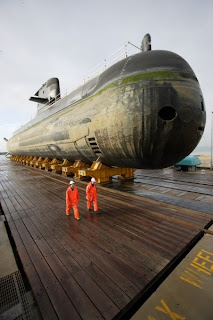Key TTX DPL type Oyashio
Length: 82 m
Width: 8,9 m
Draft: 7,9 m
Displacement: 2,700 above-water, underwater 3000 m
EC: single-shaft, diesel-electric, 2 diesel generators, 2 x 2380 hp
Speed: surfaced 12 submerged 20 knots
Armament: 6 533 mm torpedo - 20 torpedoes, ammunition Type 89, Type 80 and anti-ship missiles "Harpoon", mines
CEO: CEO ZQQ-5B, towed passive CEO ZQR-1
Crew: 69 people (10 officers)
Series:
SS590 "Oyashio" (1998) SS590 "Oyashio" (1998)
SS591 "Michishio" (1999) SS591 "Michishio" (1999)
SS592 "Uzushio" (2000) SS592 "Uzushio" (2000)
SS593 "Makishio" (2001) SS593 "Makishio" (2001)
SS594 "Isoshio" (2004) SS594 "Isoshio" (2004)
SS595 "Narushio" (2005) SS595 "Narushio" (2005)
SS596 construction, scheduled for commissioning in 2005
SS597 construction, scheduled for commissioning in 2005
SS598 construction, scheduled for commissioning in 2006
SS599 construction, scheduled for commissioning in 2007
Oyashio. Since 1998, the completion of the new Japanese Navy submarines at the expense of commissioning Submarine Oyashio.
These
boats surpass all operated by the Japanese navy boat on a number of
critical parameters, particularly on reserve, diving depth, the ability
of weapons systems and radio equipment.
Home
Submarine SS590 Oyashio in a series of 10 units was laid on the
shipyard company Kawasaki 26 January 1994, putting it into operation
took place on March 16, 1998 The building of all the other ships
scheduled to be held at the same shipyard.























